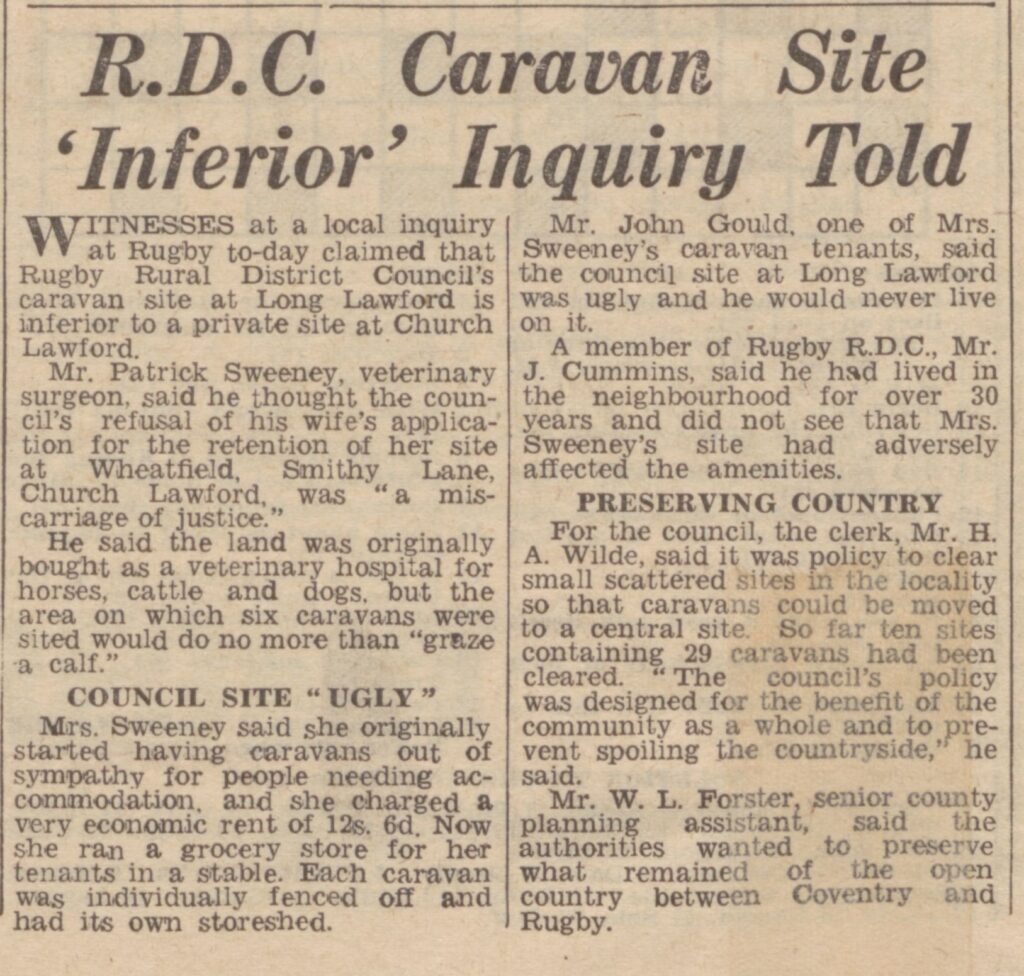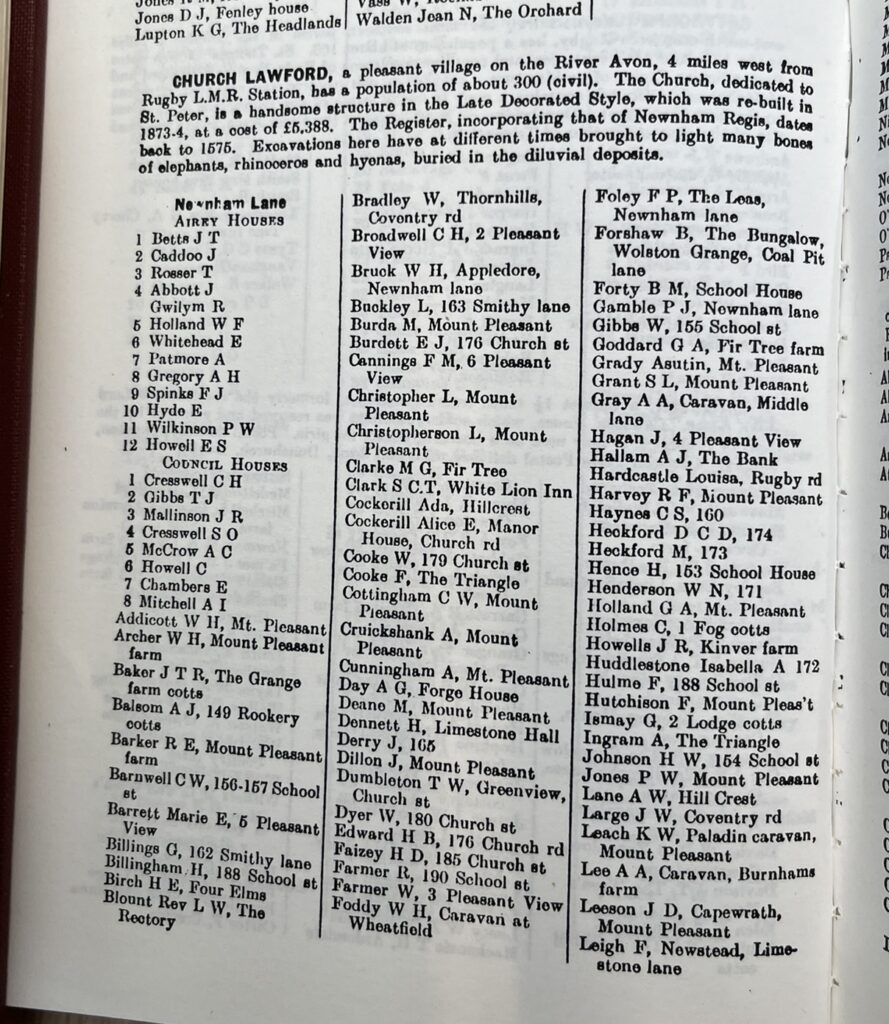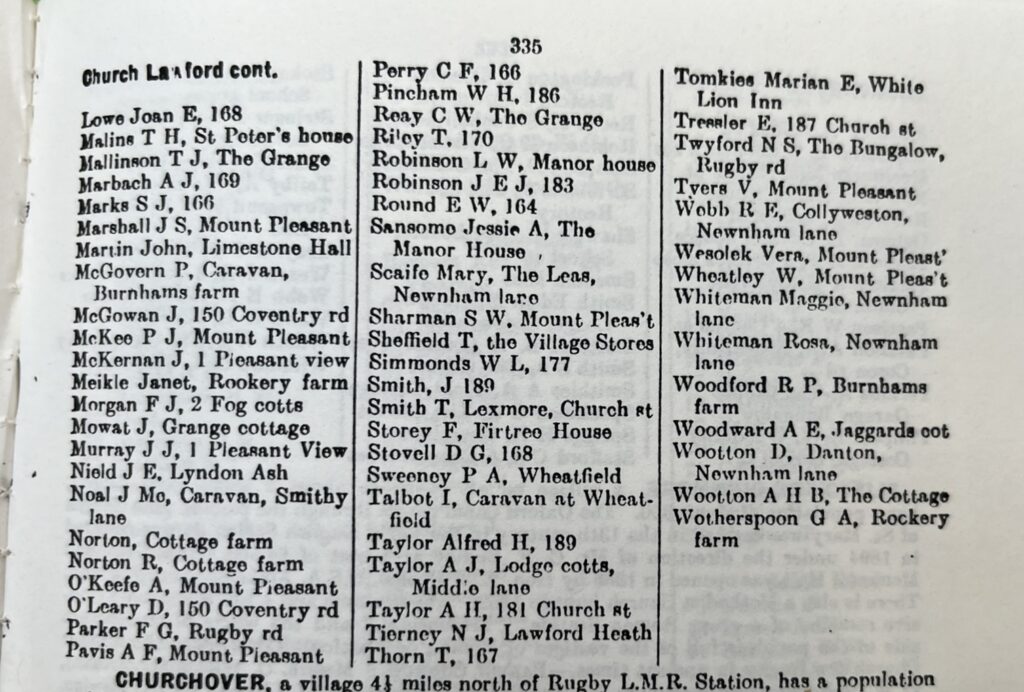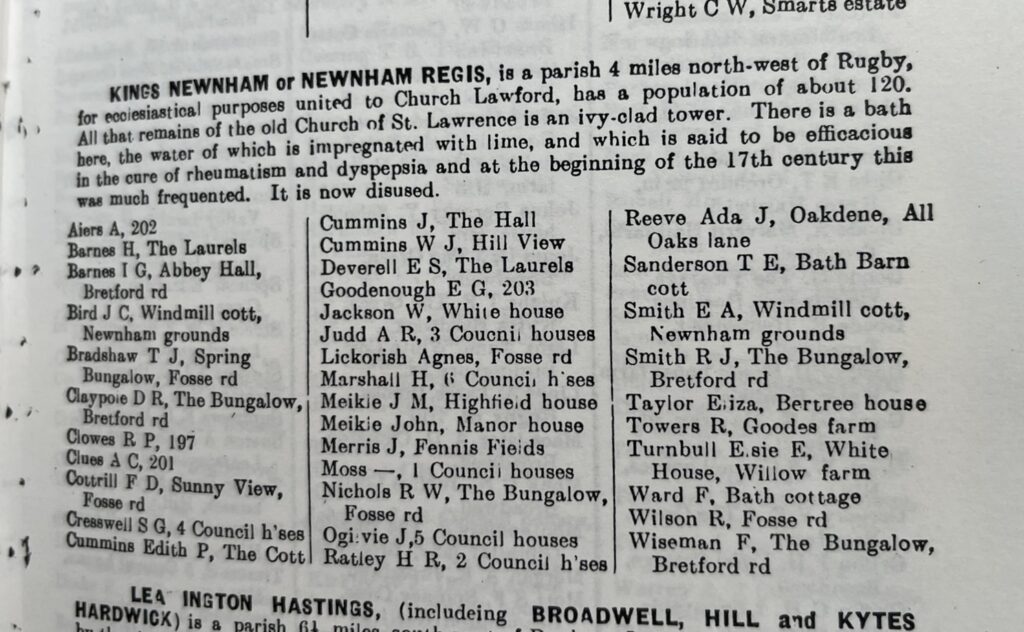Following the Second World War there was an immediate need to provide additional housing. House building had largely ceased during the period of the conflict, so various initiatives were quickly pursued.
In the two villages there were six new council owned properties built in Middle Lane – the Pleasant View houses discussed here.
Further down the village, opposite the Council properties built in the 1930s, a row of a dozen houses were built in the late 1940s / early 1950s using a new technique to be known as the Airey Houses.
In Kings Newnham, by 1957, there was a block of Council Houses built on the edge of Bretford – see the directory from 1957 at the bottom of this page.
In addition there was support for local landowners to provide caravan accommodation, and by 1956 the village directory showed how many such dwellings had been located in the village – most notably on a caravan site at Mount Pleasant Farm, but also at several other sites in Church Lawford Village as can be seen on the directory below. The previous year there had also been a caravan at Fir Tree Farm and one in Middle Lane. During 1956 there was a certain amount of backtracking in this policy by the council, with a new approach focussed on a smaller number of somewhat larger sites, so the Mount Pleasant site lasted significantly longer than the small-scale others. The attached clip from the Coventry Evening Telegraph on 21st November 1956 shows there were six caravans on the site in Wheatfield, and illustrates the council’s desire to close smaller sites.

It was also the time that a number of century-old village cottages were deemed as unfit for further habitation, and some of the occupants of these cottages were moved into the new housing. Other properties had become crowded during the war years, and the need to ease the crowding was also reflected in the allocation of these new properties.
Please note that the Rugby Almanac illustrated below was seen as looking backwards, given the information would have been supplied the previous year, and may have been compiled a while before it was supplied – and indeed recent reviews have confirmed that fact. The directories of 1959 and 1960 show the continuation of these changes, as discussed here.



